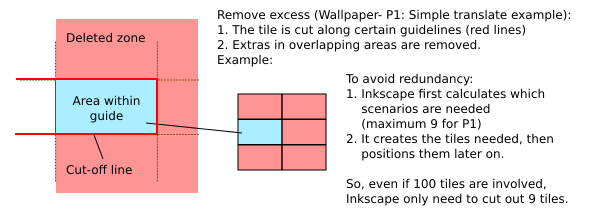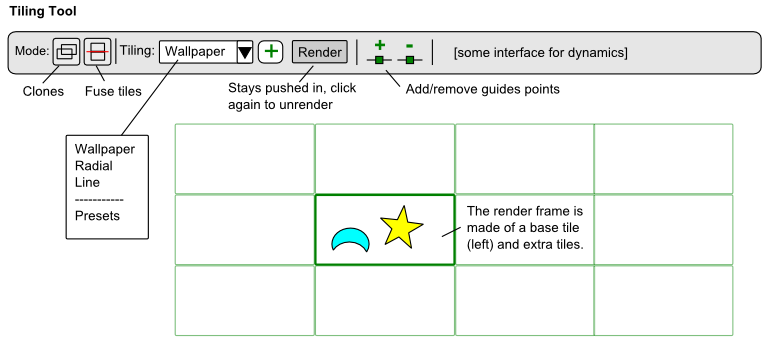


I could probably make a video of this if it would help clarify things.Print lots of each rhombus. Super Expert TIP: for a 45degree mirror from the lower left corner, set x and y attributes BOTH to -the_height_value, and set the transform attribute to matrix(0,-1,-1,0,0,0) which is what you end up with if you try and set it to rotate(90) scale(-1,1) TIP: For vertical mirroring, in step 5 make the transform attribute scale(1,-1), in step 6 instead of changing the x attribute, change the y attribute to -the_height_value When you are done, and if you want to edit the mirrored cloned layer objects (like merging them, combining them, changing the stack order, etc) just select the node you created in the XML editor and in the main inkscape menu selec Edit->Clone->Unlink Clone which turns the clone into a regular old layer you can edit all the items in. To help draw shapes that connect right on the mirror-line, just create a guideline exactly 50% of the page width and turn on snap to guides.

This is for a horizontal mirror.ħ) Create a new attribute xlink:href and set it to #the_id_of_the_source_layer so for layer1, make the value #layer1.Ĩ) Optionally, to make it easier to differentiate the mirrored clone, create a new attribute style and set it to opacity:0.5 which will make it semi-transparent. This makes it so you can't accidentally click on the clone layer.ĥ) Create a new attribute transform and set it to scale(-1,1) for a horizontal mirror.Ħ) Edit the x attribute by clicking on it and changing the value to -the_width_value. If you make a mistake, just click on the attribute and use the Delete Attribute button/icon above the list of attributes.Ĥ) Create a new attribute sodipodi:insensitive and set it to true.

This is done by typing a new attribute name in the one field and its value in the other then clicking set. Now we will create a bunch of new attributes. x and y are 0, width and height match the page. Just type in over the old attribute value and click set.Ī bunch of new attributes get created. Late to the game, but here is a way to create a mirrored clone of a layer:Ģ) Select the top node in the XML editor (will be where xxxxxxx is probably svg and some numbers) and click New Element Node (leftmost icon) xml+ and give it the name svg:useģ) I like to change the ID of this new node to reflect (ha!) the name of the layer I want to mirror, so if I am mirroring layer1, I make this new node's ID mirror#layer1.


 0 kommentar(er)
0 kommentar(er)
